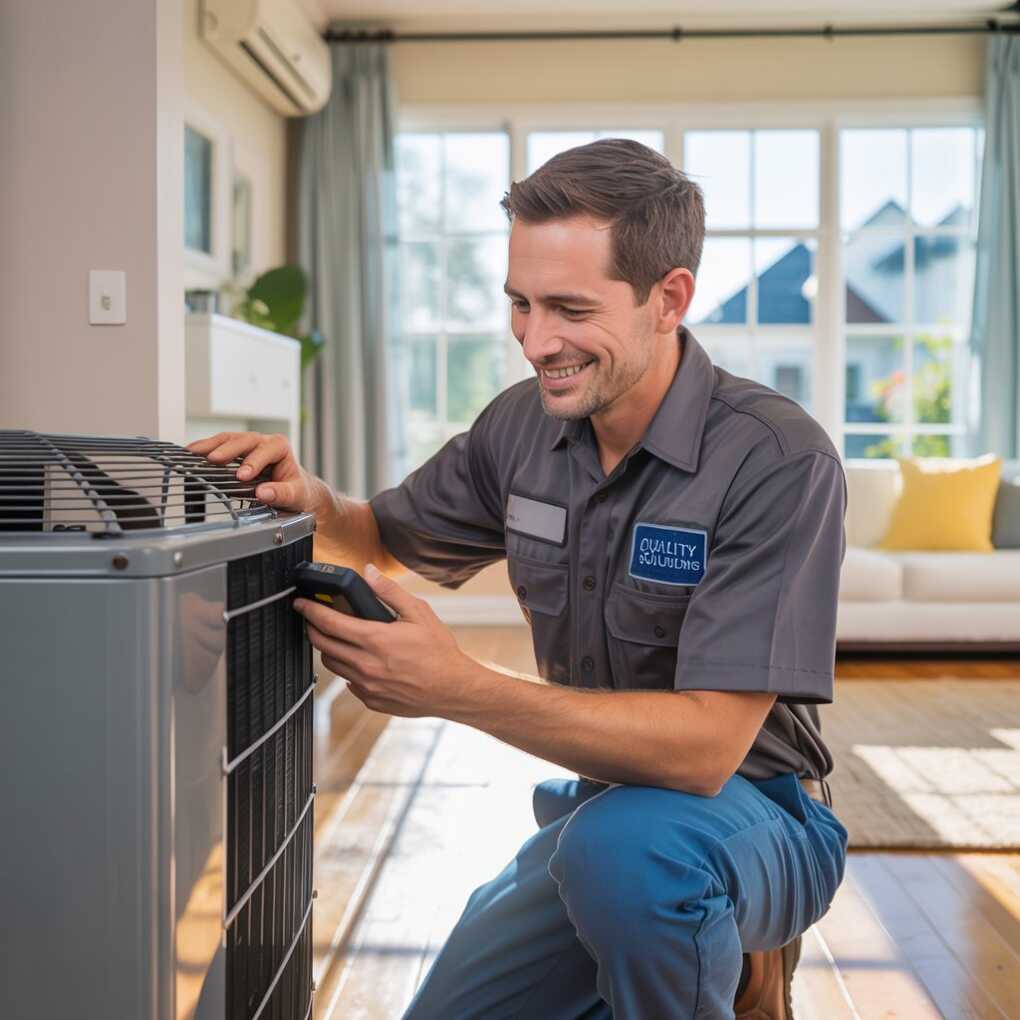Ensuring an air conditioning system runs smoothly requires routine attention beyond switching it on during hot days. A professional air conditioning service visit is vital in maintaining the unit’s comfort, efficiency, and longevity. Many homeowners and businesses rely on these visits to detect potential issues early and improve overall performance. We will explore what typically happens during a professional service visit, giving a clear understanding of the steps involved and the benefits that come with thorough maintenance. This knowledge can help users prepare for service appointments and appreciate the value they bring to their cooling systems.

The Key Steps in a Professional Air Conditioning Service Visit
Initial System Inspection and Assessment
When the technician arrives, the first step is a comprehensive inspection of the entire air conditioning system. This involves checking the indoor and outdoor units, including condensers, evaporator coils, fans, filters, and ducts. Many customers learn about scheduling this service through the company’s website, where detailed information about the process is often provided. The inspection aims to assess the current condition and identify visible signs of wear, damage, or dirt buildup. During this phase, the technician listens for unusual noises or vibrations that could indicate mechanical problems. They also verify that electrical components and wiring are intact and operating safely. This thorough examination helps create a clear picture of the system’s health and areas needing immediate or future attention.
During a professional air conditioning service visit, technicians meticulously inspect and clean various components to ensure optimal performance. They check refrigerant levels, clean coils, and assess the thermostat’s accuracy. Additionally, they examine electrical connections and lubricate moving parts to prevent wear and tear. For those seeking reliable service, AC Heating and Air Conditioning Services offers comprehensive maintenance solutions tailored to your system’s needs. Their skilled professionals are equipped to handle any issues, ensuring your air conditioning unit operates efficiently throughout the year. Regular maintenance not only extends the lifespan of your system but also enhances energy efficiency, saving you money on utility bills.
Cleaning Critical Components
A significant part of the service involves cleaning essential parts of the air conditioner. Dust, dirt, and debris accumulation can reduce efficiency and air quality. The technician cleans or replaces air filters, crucial for trapping airborne particles and protecting internal components. Dirty filters restrict airflow and force the system to work harder, increasing energy consumption. The evaporator and condenser coils are also cleaned to improve heat exchange processes. The drain lines are also cleared to prevent water buildup and potential leaks. This cleaning process restores proper airflow and cooling capacity, helping the system perform optimally.
Checking Refrigerant Levels and Pressure
Refrigerant is a key element in the cooling process, and its levels directly affect the system’s ability to cool air. During the service visit, the technician checks the refrigerant pressure and quantity to ensure they fall within recommended ranges. Low refrigerant can lead to poor cooling and may indicate a leak in the system, which requires immediate repair. Conversely, overcharging can cause unnecessary strain and damage. Adjusting refrigerant levels helps maintain efficient cooling performance while preventing long-term wear on the compressor and other components.
During a professional air conditioning service visit, technicians meticulously inspect and clean various components to ensure optimal performance. They check refrigerant levels, clean coils, and examine electrical connections. Additionally, they assess the thermostat’s accuracy and inspect the ductwork for any leaks or blockages. If any issues are detected, an air conditioning repair service can be scheduled to address these problems promptly, ensuring your system runs efficiently and effectively. Regular maintenance not only extends the lifespan of your unit but also enhances indoor air quality, providing a comfortable and healthy environment for you and your family.
Testing Electrical Connections and Controls
The air conditioning system relies heavily on electrical components to function correctly. The technician inspects and tests electrical connections, controls, and thermostats to confirm everything operates smoothly and safely. Loose or corroded wires can cause intermittent failures or even pose fire hazards. The thermostat calibration is verified to ensure it accurately controls the desired temperature settings. By examining the electrical system, the technician helps prevent unexpected breakdowns and improves system responsiveness.
Lubrication of Moving Parts
Many air conditioning units have motors, fans, and other moving parts that require lubrication to reduce friction and wear. During the service visit, the technician lubricates these components if necessary, which helps maintain smooth operation and prolongs their lifespan. Proper lubrication also reduces noise and prevents overheating, contributing to the system’s overall reliability.
Assessing Airflow and Ductwork
Efficient airflow is vital for effective cooling and comfort. The technician evaluates airflow through the system, checking for any obstructions, leaks, or damage within the ductwork. Leaky or poorly insulated ducts can cause cooled air to escape before reaching the intended rooms, reducing efficiency and increasing energy costs. Sealing leaks and improving insulation during the visit helps the system distribute air evenly and maintain consistent temperatures throughout the space.
Performance Testing and System Calibration
After completing inspections, cleaning, and adjustments, the technician runs the air conditioning system to test its overall performance. This includes monitoring temperature differences between the intake and output air, checking compressor operation, and ensuring the system cycles on and off correctly. Any anomalies in cooling capacity, noise, or operation are addressed before the visit concludes. This performance check ensures the system is functioning at an optimal level and ready to provide reliable cooling.
Providing Recommendations and Documentation
At the end of the visit, the technician typically shares findings with the homeowner or facility manager, including any concerns or repairs that might be necessary soon. They may also offer tips for maintaining the system between service appointments, such as changing filters regularly or keeping outdoor units free of debris. A written report or checklist is often provided, documenting the work performed and the system’s condition. This record can be useful for tracking maintenance history and planning future services.
Regular professional air conditioning service visits are more than just routine checkups. They help prevent costly repairs, improve energy efficiency, and extend the system’s life. Understanding the steps involved clarifies what to expect and highlights the importance of consistent maintenance. Keeping the system in good condition contributes to a comfortable indoor environment and peace of mind throughout warm seasons.
Conclusion
A professional air conditioning service visit is a detailed process that covers inspection, cleaning, testing, and adjustments to ensure the unit operates effectively. Each step is crucial in maintaining system health and preventing unexpected breakdowns. Users can enjoy reliable cooling, better air quality, and energy savings by investing in regular service visits. Preparing for these visits and understanding what happens during them empowers homeowners and businesses to make informed decisions about their cooling systems and upkeep.
